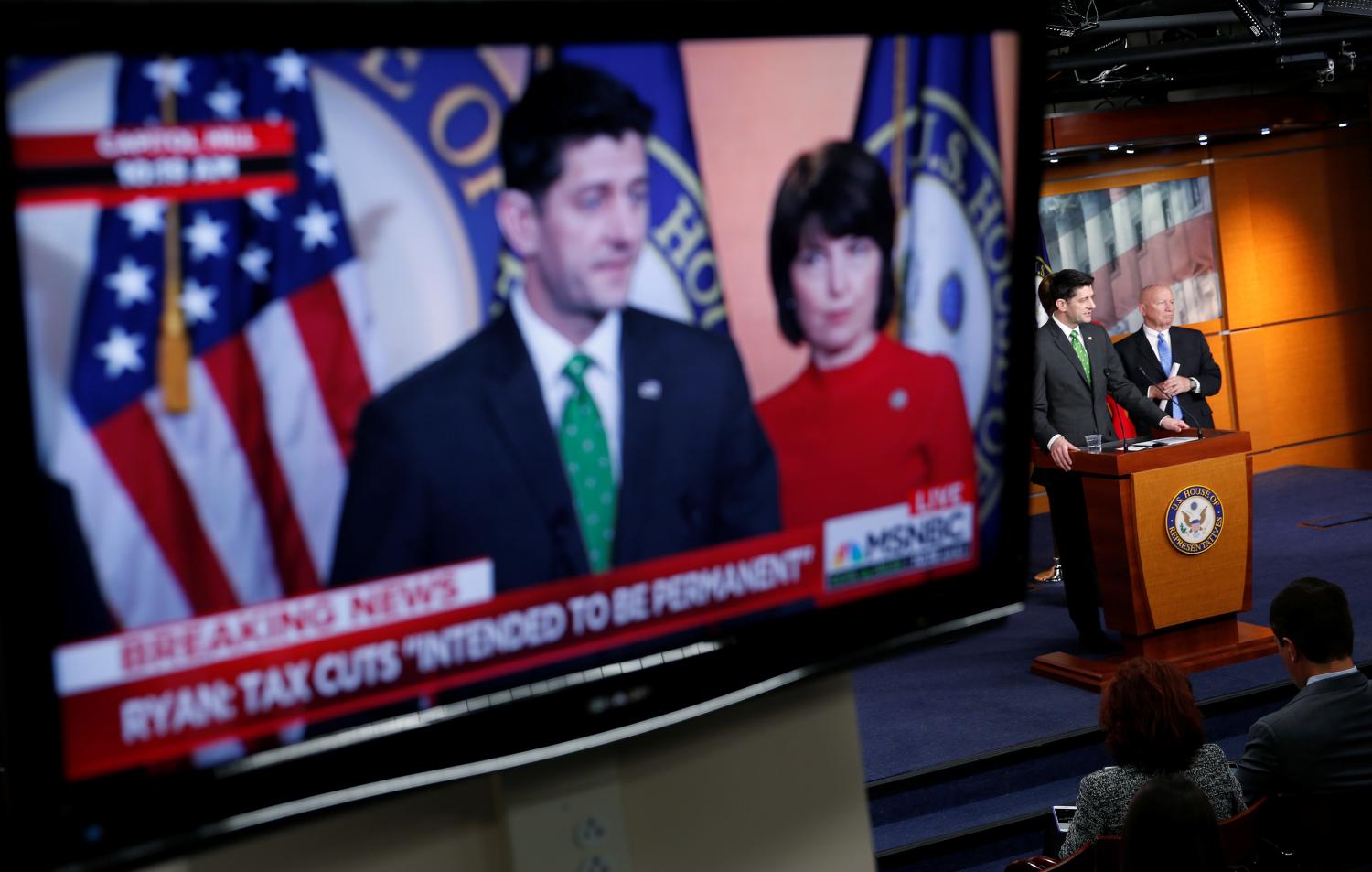On balance, the medium-term (10-year) outlook has worsened over the past year. The 2017 tax cut, the 2018 spending deals, and higher projected interest rates raise projected deficits and debt, while expectations of a stronger economy (in large part attributable to the fiscal stimulus from policy changes) and lower health care spending work in the opposite direction. The net effect is that CBO now projects a debt-GDP ratio of 94.5 percent in 2027 under current law, compared to a similar projection of 91.2 percent last June.1 Nevertheless, the fiscal situation, already very problematic, has become more so. In “The federal budget outlook: Even crazier after all these years” (PDF), Alan Auerbach, William Gale, and Aaron Krupkin examines the budget outlook, given new Congressional Budget Office (CBO) projections that incorporate the 2017 tax act and the 2018 spending deals.2
First, in an odd twist, the strong projected economy makes the projections of large deficits more worrisome. CBO projects that cumulative actual and potential GDP will be equal, on average, over the 2018-2028 period. The strong economic performance is due in significant part to the implementation of the tax legislation. But it also means that the higher projected deficits and debt are essentially full-employment deficits. If (when?) the economy falls into recession, the medium-term fiscal outlook is likely to look significantly worse.

Second, under a “current policy” scenario, the problem is considerably worse, as CBO acknowledges. Whereas current-law projections examine the impact of Congress essentially making no further changes over the projection period, “current policy” projections estimate the impact of what might be termed “business-as-usual” assumptions regarding tax and spending choices—in particular, that policy makers routinely extend temporary provisions.3 Under current law, CBO projects a debt-GDP ratio of 96.2 percent by 2028. Under current policy, the authors project a debt-GDP ratio of 106.5 percent in that year, which would be the highest ratio in U.S. history.
Third, the situation only gets worse after 2028. The “fiscal gap” measures the tax and spending changes needed to bring the debt-GDP ratio to a specified level in a specified year. For example, under current policy, the authors find that to ensure the debt-GDP ratio 30 years from now does not exceed the current level would require a combination of immediate and permanent spending cuts and/or tax increases totaling 4.0 percent of GDP. This represents about a 21 percent cut in non-interest spending or a 24 percent increase in tax revenues relative to current levels. To put this in perspective, the 2017 tax cuts and 2018 spending deals will raise the deficit by slightly more than 2 percent of GDP in 2019. The required adjustments to keep debt at its current ratio to GDP in 2048 are about twice as big and in the opposite direction. The longer policy makers wait to institute changes, the larger those adjustments would have to be to hit a given debt target in a given year. Moreover, over a longer horizon, the required annual adjustments are much larger, because the projected fiscal trajectory under current policy continues to deteriorate.
Sustained federal deficits and rising federal debt that are used to finance consumption or transfer payments will crowd out future investment, reduce prospects for economic growth, make it more difficult to conduct routine policy, address major new priorities, or deal with the next recession or emergencies, and impose substantial burdens on future generations. The nation’s debt-GDP ratio rose by about 35 percentage points in the most recent recession. It is hard to believe that policy makers or financial markets would look kindly on the U.S. needing to borrow another 35 percent of GDP should another recession hit. While it is not well understood how high a country’s debt can go without precipitating a crisis, especially for a country that borrows in its own currency, there is no doubt that a rising debt-GDP ratio can’t go on forever.
Download the full paper here.
-
Footnotes
- CBO (2017b, 2018).
- CBO (2018).
- CBO’s current-law projections assume that some actions are taken: the debt ceiling is raised, existing programs are reauthorized, and Social Security and Medicare programs pay scheduled benefits, even if their respective trust funds are depleted.






